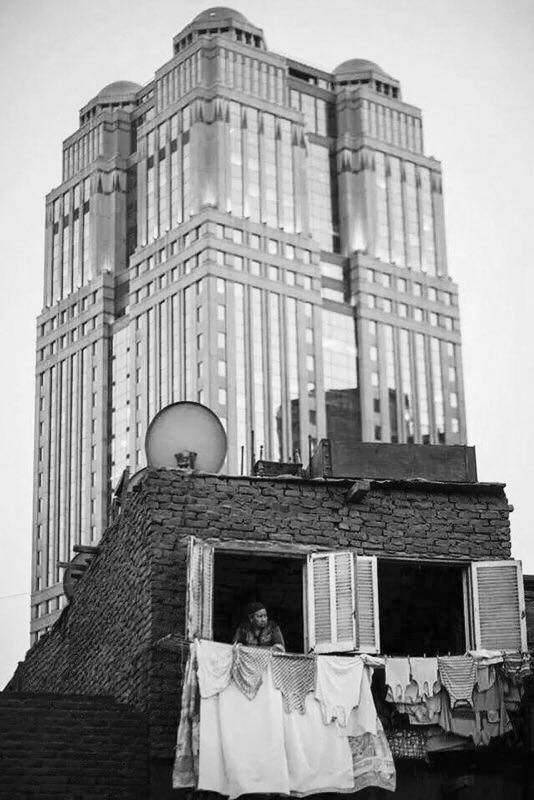
Pictures speak louder than words. This is Cairo, Egypt a place known to the world as a cultural phenomenon and one of the most ancient civilizations. History has documented Egypt’s economy back in the day to be one of the strongest, based on trading and production. Despite having a clear social hierarchy from kings to slaves, social equality was apparent, given all social classes including slaves had the right to trade and contribute to the economy.
Nowadays, there is a colossal discrepancy between social classes that has affected the economy of the country tremendously. This has influenced modern architecture and urban planning significantly, where an image like the one presented above has become reality. Migrations from agricultural to the urban city to seek job opportunities away from the agricultural sector has lead to an urban crisis in the city and consequently almost diminished the agricultural produce.
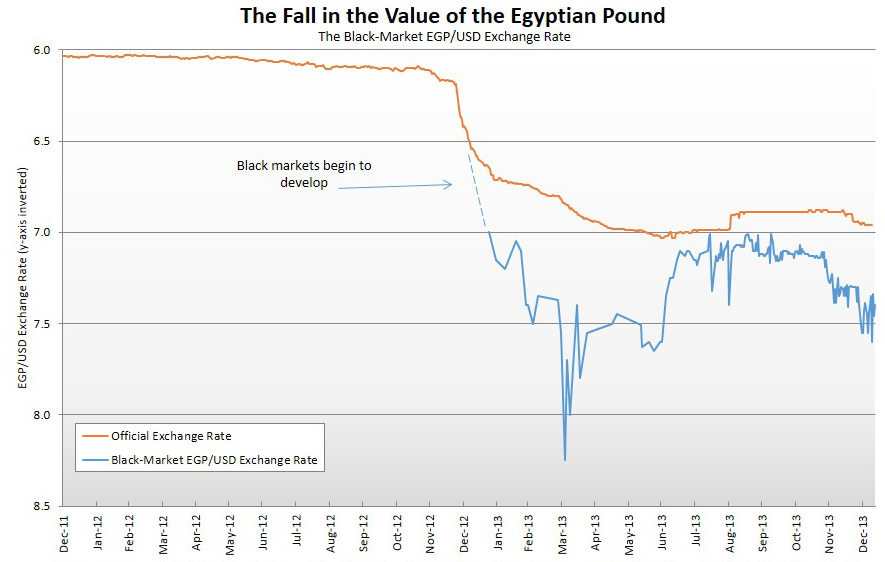
As a result of all above mentioned factors the city has become over populated and the urban design has failed to cater to this rapid increase in density, creating an enormous gap in the supply and demand of the employment sector. The rise in unemployment created a social and economic gap resulted in a significant shrinkage of the middle class portion of the population.
“The rich became richer and the poor became poorer”
Furthermore, high construction cost and poor construction codes, not to mention bribery and unethical execution of urban planning and construction has aided to this slow disaster created by a pile up of errors which rendered a high percentage of the population homeless or unable to afford housing.

This vast discrepancy between the high end areas and the slums has created a certain isolation between the inhabitants thus resulting in ill-defined planning. The Image above shows the two different worlds created in Egypt and the obvious investment vs. non-investment in the urban structure. The government nurtures the areas where the economical flow and touristic exposure is relevant, consequently disregarding the importance of low income housing and the urban structure attached to it. People living in the low income houses/areas are experiencing a totally different side of Cairo than people living in higher income housing. The economical segregation creates and intimidation between both societies making it rather challenging for a rising economical flow to be created due to these inconsistencies.
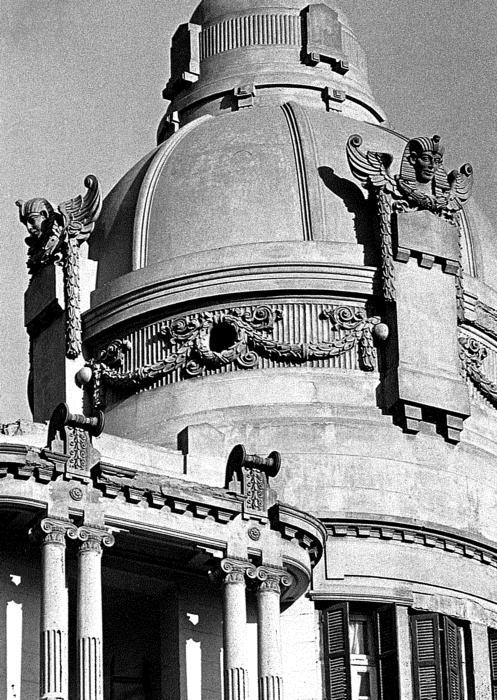
To better understand the urban dynamic of Cairo it is relevant to dissect the areas according to function, economic importance and circulation. Starting with downtown Cairo, the most lively and robust area of greater Cairo. It is an area that merges different classes and societies in a somewhat hectic yet harmonious manner, arguably one of the only areas where economical segregation is not present and the old architecture is relatively recognized. This is a result of the old founded trading culture that is founded in the area. Also being one of the first areas where urban planning was stressed. The area includes broad, linear gridded streets with geometric harmony making it one of the better paces to navigate in Cairo. After the revolution and political reform a lot of the Belle époque of Cairo moved away from the center and the lax of law enforcement led the area to be more commercial and less preserved. Nevertheless, downtown still maintains a very unique atmosphere bringing a lot of individuals from different social standards together due to its artistic and unique atmosphere. In my personal opinion it arguably the least segregated area of modern Egypt.
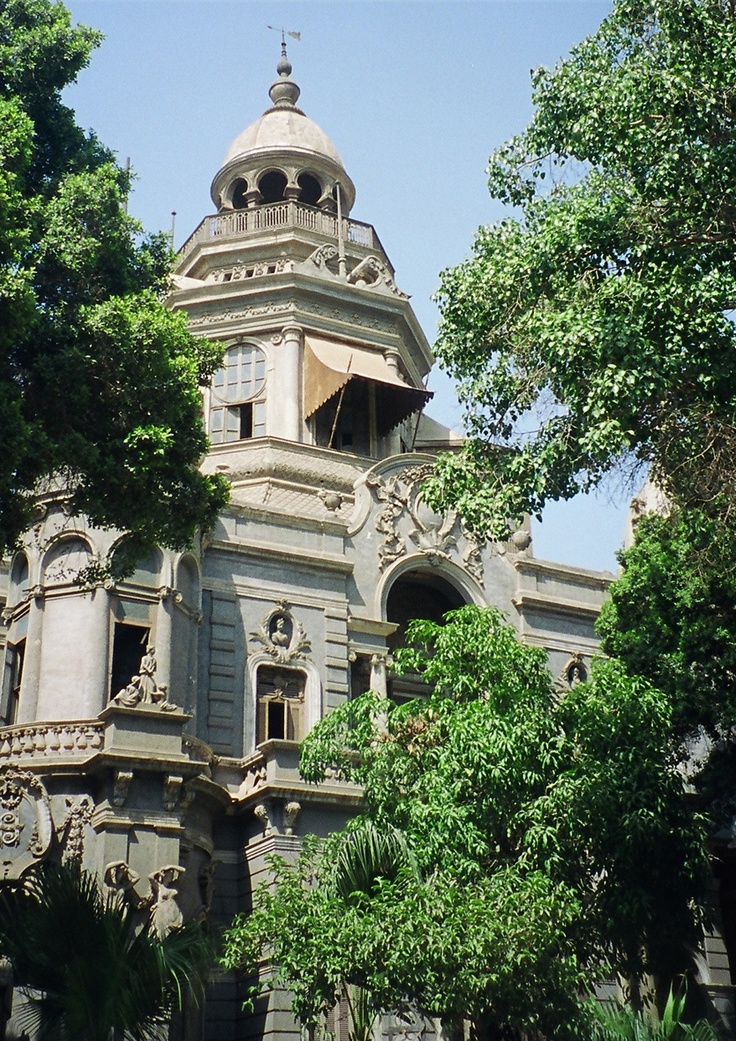
The next important area to mention is “Garden city “one of Egypt’s most elite areas. Not only because of its impeccable urban planning which was executed by private investors making it more of a European planned area with wide tree-lined streets, a lot of gardens and elegant ornamented architecture, but also because of its proximity to the American and British embassies making it a place of interest and a tourist attraction. Because of this stable surrounding it creates a safe and calm environment for visitors. Important to mention are also all the five star hotels all over that area overlooking the Nile that only make the real-estate and importance of this area even more profound.
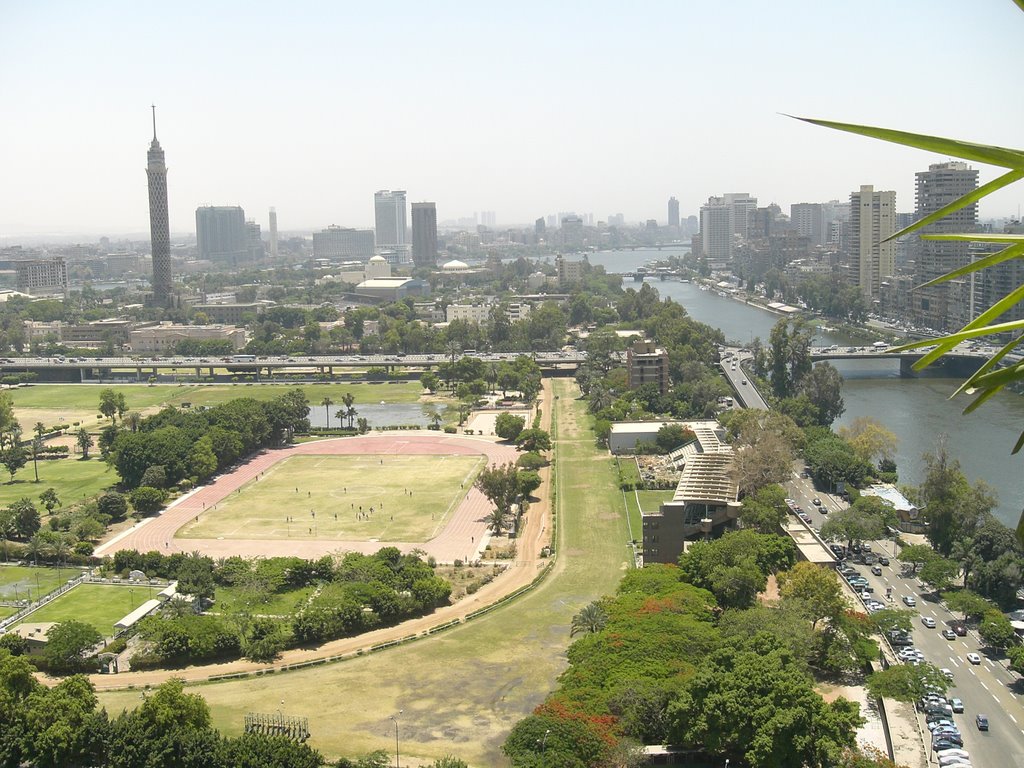
In close proximity is the next affluent area of Egypt the island “Zamalek” which is the middle point between the other areas yet to be discussed. The quiet leafy streets and the 19th century architecture in apartment building and villas makes it a pleasant place to live. It is arguably one of the view areas in Egypt where walking around can happen in piece. The area also is full of foreigners given its unique location, the nightlife and the ease of movement. It’s also culturally active with a lot of art galleries, museums and the biggest music and art performance venues in Egypt. A lot of embassies are also located in the area. One can say, if you live in Zamalek you could technically never leave the island, because everything you need is available there from night life, to embassies, shops, cultural events, walking areas and a safe zone. However biased that may be, all the above mentioned qualities contribute to the general interest of the government to keep the area well maintained in terms of traffic circulation, safety and domestic quality of living in the general sense.
Mohanessein is the next dominant district in Cairo. Transformed in the 1950 from an agricultural land to a residential area with rich architecture villas and maisons. Yet due to the significant population increase in the 1970’s the area was converted into crowded apartment blocks as to cater to the population mass. This is also one of Egypt’s elite districts because of its location and the availability of shopping centers, restaurants and being a pre-dominantly residential, family friendly area.
Another important district to mention is Maadi. An area of special interest to expats and foreign residents due to its quiet serene atmosphere and family friendly environment, resulting in a number of international schools locating in the area. The architecture in Maadi is mainly consistent of old villas with spacious gardens that make the architecture pretty unique to the area. The serenity and easy movement in this zone makes it one of Egypt’s most sought after real estate. A lot of the elite society occupies that area given it is walk and bike friendly and also full of gardens and well maintained streets.
Last but not least Heliopolis: The urban planning and architecture of this specific zone of Cairo plays a huge role in its importance. A place like “korba” a shopping area was executed by craftsmen from all over the world to create a master piece at the end. Located at close proximity to the airport not to mention having both presidential palaces at the most lively hubs of the area in addition to a number 5 star hotels.
All the above mentioned districts are major areas where Egypt’s elite society occupies and the people the government wants to “keep happy” and keep the economy moving forward. Due to the ongoing inflation and the bigger inconsistencies between societies a huge social and economic gap was created. These areas started to be so isolated of their surroundings that slums started emerging leading to ill-defined planning. People in the slums are overlooking these massive architectural structures erecting that in turn causes a sense of intimidation and isolation between societies. Segregating Cairo into two different worlds making the less fortuned society too overwhelmed to be part of the more fortunate one.
The extreme contrast between two bays of the nile where the area “zamalek” on one hand resides, with its peaceful posh status and on the other hand the bay “imbaba” resides with its poorly maintained exterior, chaotic infrastructure and electricity shortages. The intimidation factor doesn’t just come because of their distance to that society it’s also in my opinion a huge part related to the architecture and the more visual aspect. People that are less fortunate even if they want to mingle and be part of a better life style and living situation the architecture and planning creates an intimidation factor that does not help these people to be part of society. This huge isolation that is created makes people less, as they are reminded everyday how far they are from this reality. Not only does architecture in the real world do that to them also the media advertising grand villas and vast gardens are presented as the normal life style of every Egyptian family which is farthest from the existing reality.
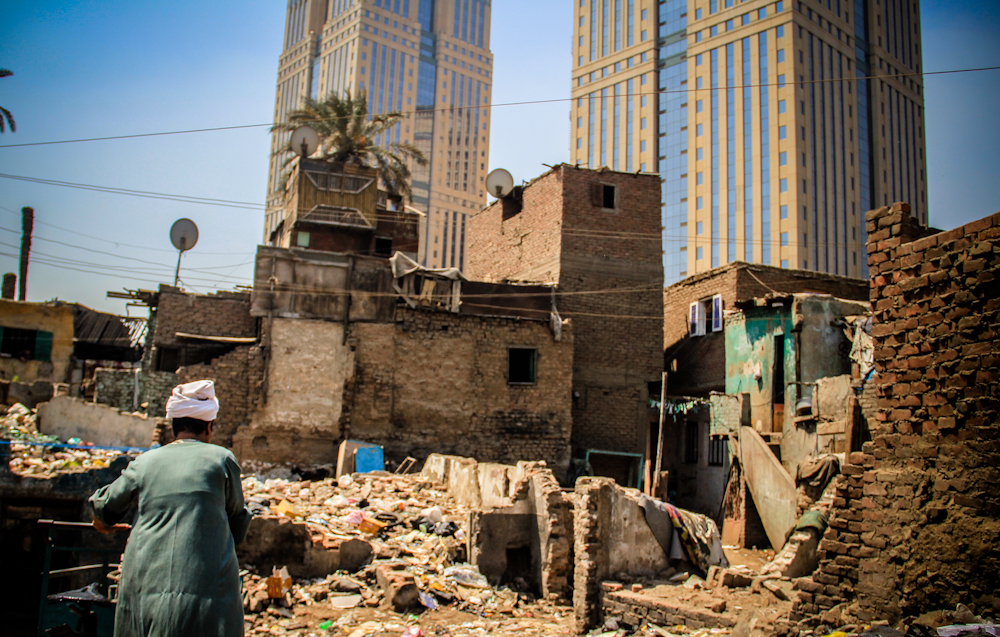
In my opinion architecture could be a very good start to make the social difference more appreciated and less intimidating. Providing the less fortunate with a better life a better plan to go by to be a productive part of society could be a way to start. Also the government or private investors should invest in making everyone have a proper livable shelter by maybe making these people work and produce in return have their house renovated in a way that is livable and functional. The wellbeing of people and standard of living can impact the economy tremendously. Given if people have a good shelter and feel secure they are more likely to produce and try to be part of society and not be isolated. I think it could be a potentially great project to take some of the slums and rebuild them by taking the people in the district and make them contribute in society in return to have their houses rebuilt for them. That would help them understand the important of integrating and accomplishing. It could be a good start to a better economy and a more versatile interaction between people.
Two Worlds One Cairo
This entry was posted in Uncategorized. Bookmark the permalink. Both comments and trackbacks are currently closed.
